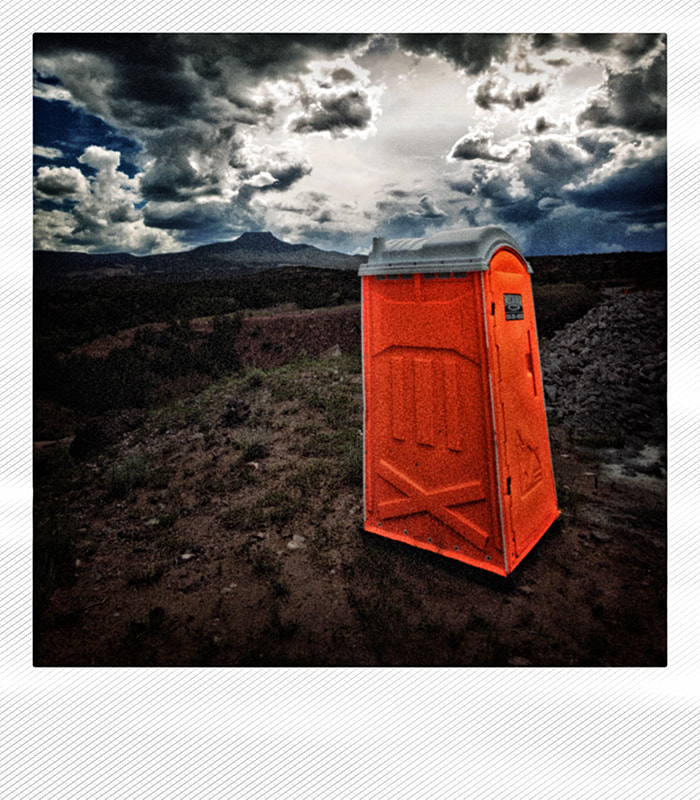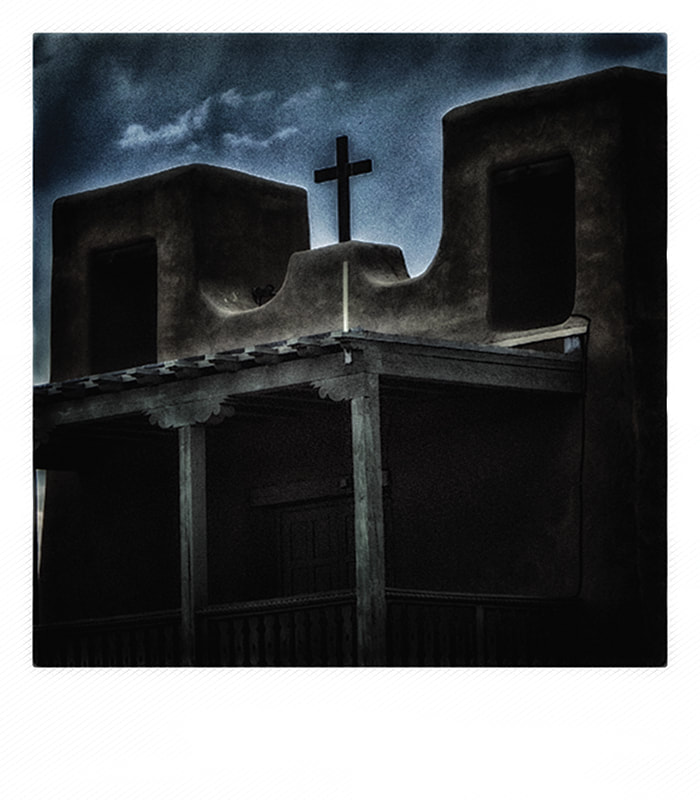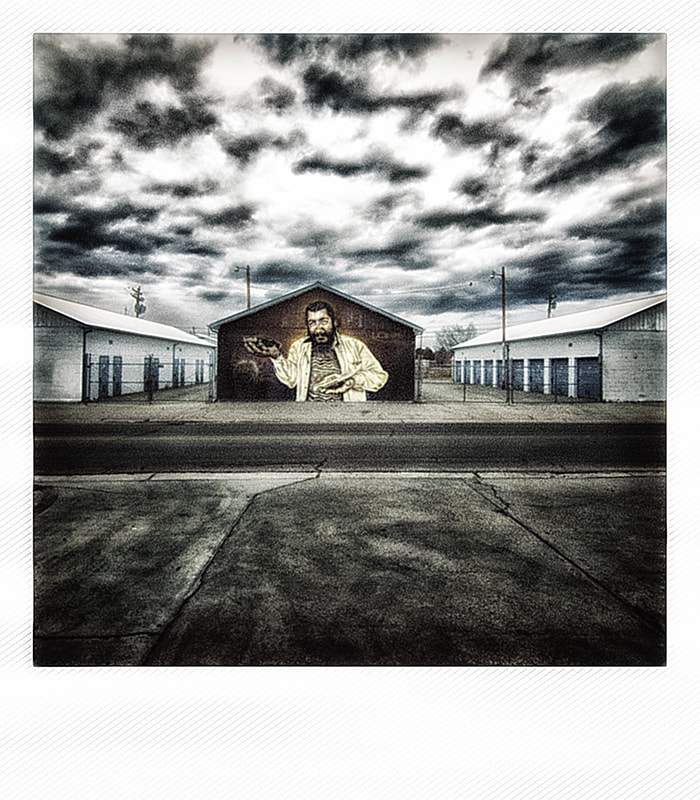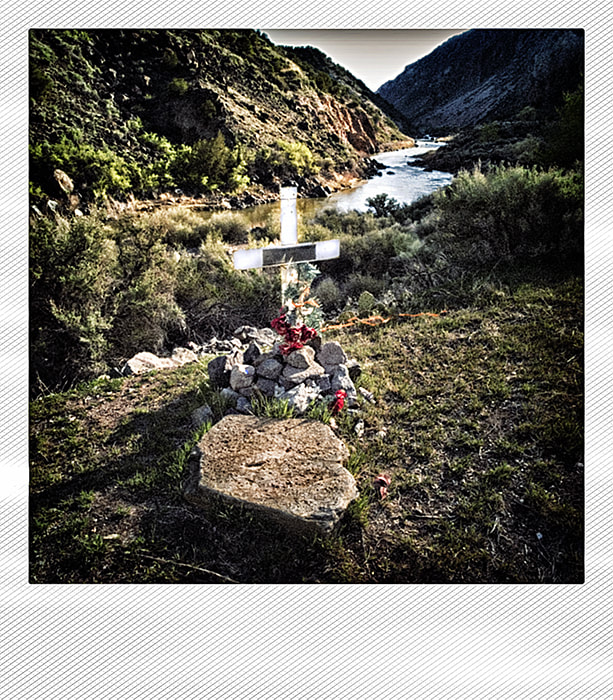Polaroids of Northern New Mexico
Small church, Ghost Ranch
I’ve always been fascinated with Polaroid cameras and was excited when I found a Polaroid 600SE (affectionately referred to as The Goose) model on an online auction site.
There seems to be a resurgence of interest in instant cameras, especially with ones produced by Lomography and Fuji.
But I prefer the 600SE since it offers more control over the images than most of the other more popular cameras on the market.
Since the 600SE is a bit large, heavy and clunky, I don’t take it along all the time, but when I do, I take photos with it along with the other camera(s) I have with me. Its advantage over most other instant cameras is it has interchangeable lenses and full control over exposure, and rangefinder focussing, which I really love.
When I find a compelling scene I feel will work with the 600SE, I’ll take a few additional instant photos to compliment my more “traditional” work.
Obstacle one: the 600SE’s film back used obsolete film, which is available through places such as eBay but is always outdated, hence somewhat unpredictable and expensive.
So I devised a way to adapt the film back to modern Polaroid film, making it, in the process, look something akin to a photographic Bride of Frankenstein.
The other obstacle I encountered after adapting to modern film was adjusting my visualization and composition to a square format.
I’ve always visualized images in the typical horizontal format so adjusting to the square image of the Polaroid 600 took a bit of a learning curve.
I've always enjoyed looking at old LPs when I visit thrift stores. And I always admired the compositional quality the photographers exhibited using the square format. Once I got accustomed to the square format of the contemporary Polaroid film I grew to like it, although I still enjoy shooting in the traditional 35mm format when using other cameras.
I’ve developed a working system that I use with this camera that helps me create a bit harsher, edgier, increased contrast and saturated images.
I achieve the increase in saturation by a technique called shielding, which happens to the photo during development time that ensures that I get deeper saturation, sharper details and that my final image is not washed out.
I’ve assembled a selection of Northern New Mexico images I’ve taken with the 600SE.
There seems to be a resurgence of interest in instant cameras, especially with ones produced by Lomography and Fuji.
But I prefer the 600SE since it offers more control over the images than most of the other more popular cameras on the market.
Since the 600SE is a bit large, heavy and clunky, I don’t take it along all the time, but when I do, I take photos with it along with the other camera(s) I have with me. Its advantage over most other instant cameras is it has interchangeable lenses and full control over exposure, and rangefinder focussing, which I really love.
When I find a compelling scene I feel will work with the 600SE, I’ll take a few additional instant photos to compliment my more “traditional” work.
Obstacle one: the 600SE’s film back used obsolete film, which is available through places such as eBay but is always outdated, hence somewhat unpredictable and expensive.
So I devised a way to adapt the film back to modern Polaroid film, making it, in the process, look something akin to a photographic Bride of Frankenstein.
The other obstacle I encountered after adapting to modern film was adjusting my visualization and composition to a square format.
I’ve always visualized images in the typical horizontal format so adjusting to the square image of the Polaroid 600 took a bit of a learning curve.
I've always enjoyed looking at old LPs when I visit thrift stores. And I always admired the compositional quality the photographers exhibited using the square format. Once I got accustomed to the square format of the contemporary Polaroid film I grew to like it, although I still enjoy shooting in the traditional 35mm format when using other cameras.
I’ve developed a working system that I use with this camera that helps me create a bit harsher, edgier, increased contrast and saturated images.
I achieve the increase in saturation by a technique called shielding, which happens to the photo during development time that ensures that I get deeper saturation, sharper details and that my final image is not washed out.
I’ve assembled a selection of Northern New Mexico images I’ve taken with the 600SE.
|
Storm, Black Mesa, San Ildefonso Pueblo
Porta Potty and Cerro Pedernal
Garlic planting, Northern New Mexico College
Mision Convento, Espanola, NM
Stop N Eat, Espanola, NM
|
Mural painter, Bounce Back (formerly Spanapalooza) event, Espanola, NM
Descanso (roadside cross), Espanola, NM
Baile-Ilusion Danceers, Espanola Valley Arts Festival
Lowrider-themed mural, Espanola, NM
Willie's Pool Hall, Espanola, NM
|
|
Big Top, Circus Saurus, Espanola, NM
Santuario de Chimayo
Circus Saurus
Washing ponies, Circus Saurus
Elk herd crossing Rio Chama, Abiquiu, New Mexico
Small Western-looking church, Ghost Ranch
Car hopping, Lowrideer Day, Espanola, NM
Sunrise, Highway 84 as it approaches Abiquiu Valley
Chimney Rock with snow, Ghost Ranch
Abiquiu Dam in winter
Ranchos de Taos church
Tipi sales, near Ranchos de Taos
|
One of Bobby Chacon's lowriders
Santuario de Chimayo
Espanola Fiesta
Cerro Pedernal, Northern New Mexico, Georgia O'Keeffe country
Trees in the fall, Rio Chama
The often photographed Rio Chama bend, Abiquiu, NM
Santa Rosa de Lima church ruins, Abiquiu, NM
Rio Arriba County Fair
Jeff Brock's Cadilac in front of a closed theater, Espanola, NM
Rio Chama, fall colors
Ranchos de Taos church
Descanso, Roadside Cross, Highway 68 near Pilar, NM
|
To contact Bob Eckert for assignments, consultations or workshops, please email [email protected]
or use the contact form on the About page
or use the contact form on the About page




































